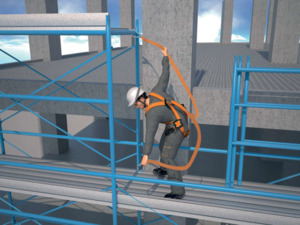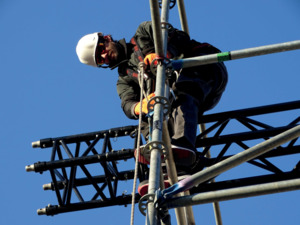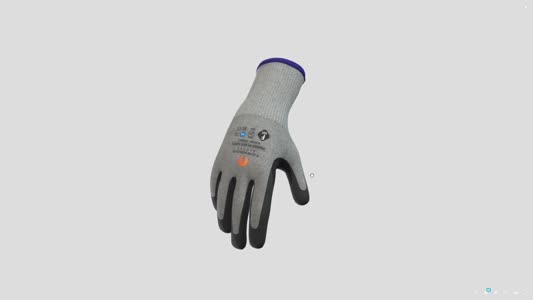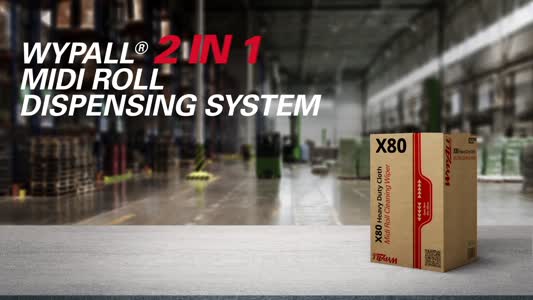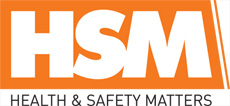
 |
Mark Sennett
Managing Editor |
 |
Kelly Rose
Editor |
| Home> | Slips, Trips & Falls | >Fall Prevention | >Breaking the fall |
| Home> | Slips, Trips & Falls | >Fall Protection | >Breaking the fall |
Breaking the fall
23 September 2025
Working at height is one of the most hazardous activities and fall protection systems and safety concepts have been developed and standardised to safeguard workers. Jon Holt provides an overview of fall protection and its safety concepts, emphasising the importance of prevention, proper equipment, and safety culture.

FALL PROTECTION refers to a variety of methods, systems, equipment, and procedures designed to prevent workers from falling from heights or to arrest a fall safely when it occurs. The goal of fall protection is twofold: prevent falls from happening and minimise injury if a fall occurs (energy absorption).
Falls can happen when working on scaffolds, roofs, ladders, elevated platforms, or near openings and edges without adequate safety measures. Fall protection is the measures that keep a person from falling or stop them once they do.
The importance of fall protection
Falls are the leading cause of death in the construction industry. Each year, thousands of workers suffer serious injuries or die from falls. Fall protection saves lives and prevents costly accidents, lost productivity, and legal liabilities.
Beyond regulatory compliance, promoting fall protection improves worker confidence and morale, helping companies maintain safer workplaces. A well-implemented fall protection program also reflects a company’s commitment to employee well-being and professional standards.
Types of fall protection systems
Fall protection systems are generally categorised into three main types:
1. Fall prevention systems
These systems are designed to prevent workers from reaching fall hazards. The idea is to create physical barriers or restrictions so that falls cannot occur.
- Guardrails: Installed on edges of roofs, scaffolds, or platforms, guardrails create a protective barrier.
- Hole Covers: Temporary covers on floor holes and openings prevent workers from stepping into them.
- Warning lines: These are rope, wire, or chain lines placed at least 6 feet from the edge to warn workers they are approaching a hazard.
- Fall restraint devices: These physically restrict a worker’s movement to prevent them from reaching the edge or hazard area.
2. Fall arrest systems
A Personal Fall Arrest System (PFAS) typically includes three key parts, known as the ABC of fall arrest:
A
Full body harness
- A full-body harness distributes fall forces across shoulders, thighs, and pelvis.
- Should fit but allow free movement.
- Never use a body belt for fall arrest — it can cause serious internal injury.
The anchor points are always located to the upper part of the harness
B
Fall arrest system
- Energy absorber
- Self-retracting devices (SRLs)
- Sliding devices on ropes or cable
C
Anchor point
- Secure attachment point for the system.
- Must support at least 12 kN per attached worker or be designed by a qualified person. ( EN certification)
- Can be installed on:
- Roofs
- Structural beams
- Mobile anchor devices
3. Fall rescue systems
Even with arrest systems in place, workers suspended in harnesses require prompt rescue to prevent suspension trauma. Fall rescue systems and plans include:
- Rescue equipment such as lowering devices or aerial lifts.
- Trained personnel to perform timely rescues.
- Pre-planned procedures to ensure safe recovery.
Understanding fall factors
A crucial concept in fall protection is the fall factor, which measures the severity of a fall relative to the length of rope or lanyard involved.
The clearance is the distance between user’s feet to the first obstacle he can meet in case of fall.
Fall factors range from 0 to 2:
- A fall factor of 0 means no fall or a taut line with almost no free fall.
- A fall factor of 1 means the fall distance is equal to the length of the rope.
- The maximum fall factor of 2 means a fall twice the rope length, which causes the highest impact force.
Clearance distance
Clearance distance, also known as fall clearance, is the minimum vertical distance required between a worker's feet and the nearest obstruction below them to prevent them from hitting the ground or an object during a fall.
High fall factors increase the force on both the worker and equipment, potentially causing equipment failure or injury. Fall arrest equipment is designed to handle fall factors up to 2, but safety practices aim to minimise fall factors whenever possible.
Regulations and standards
Fall protection is regulated internationally by standards such as:
- ANSI (American National Standards Institute)
- CSA (Canadian Standards Association)
- EN (European Standards)
- OSHA (U.S. Occupational Safety and Health Administration)
These regulations set requirements for:
- When fall protection is needed
- Types and specifications for equipment.
- Training and inspection protocols.
- Employer responsibilities and safety program requirements.
Complying with these standards is mandatory and essential for legal and ethical workplace safety.
Key components of a fall protection program
An effective fall protection program includes:
1. Hazard assessment
Identify all areas where workers may be exposed to fall hazards. This involves site surveys, analyzing job tasks, and understanding fall distances and potential fall factors.
2. Selection of appropriate protection
Choose the best fall protection system based on the hazard, work conditions, and worker needs. This could include guardrails, safety nets, personal fall arrest systems, or fall restraint.
3. Equipment inspection and maintenance
Regularly inspect all fall protection equipment for wear, damage, and functionality. Replace defective gear immediately.
To help the user to remind the annual checking, Delta Plus has launched a new free application to have all information’s and an annual reminder.
4. Worker training
Workers must be trained on:
- Proper use and limitations of fall protection systems.
- Correct adjustment of harnesses.
- How to inspect equipment.
- Rescue procedures.
5. Rescue planning
Establish a rescue plan to promptly assist any worker caught in a fall arrest system.
Best practices for all protection safety
- Always anchor above the worker to reduce fall distance.
- Avoid slack in lanyards or lifelines to minimise fall distance.
- Use energy absorbers and shock absorbers on connectors.
- Never use body belts for fall arrest.
- Avoid sharp edges or rough surfaces that can damage ropes or harnesses.
- Maintain clear communication and supervision.
- Conduct periodic drills and refresher training.
Common causes of fall protection failure
- Improper equipment selection or misuse.
- Failure to anchor properly.
- Equipment not inspected or maintained.
- Workers not trained or not wearing equipment correctly.
- Lack of rescue plan leading to delayed help after a fall.
Conclusion
Fall protection and safety concepts are vital in protecting workers at height from injury and death. Through the proper use of prevention, restraint, and arrest systems, along with comprehensive training and rescue planning, falls can be effectively managed or prevented. Employers must prioritise hazard assessment, select the right equipment, maintain safety standards, and foster a culture of safety to ensure every worker returns home safe every day.
Jon Holt is market unit manager for UK & Ireland at Delta Plus. For more information, visit www.deltaplus.co.uk
